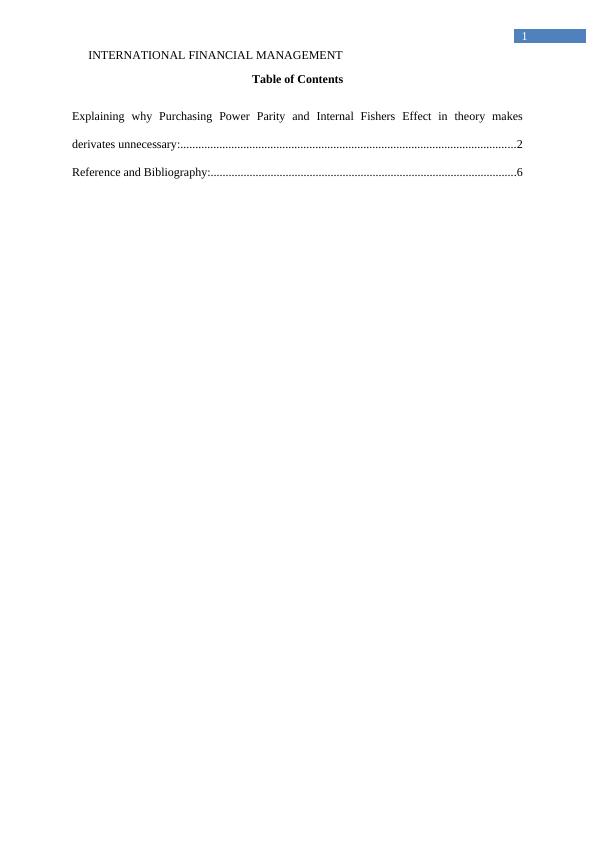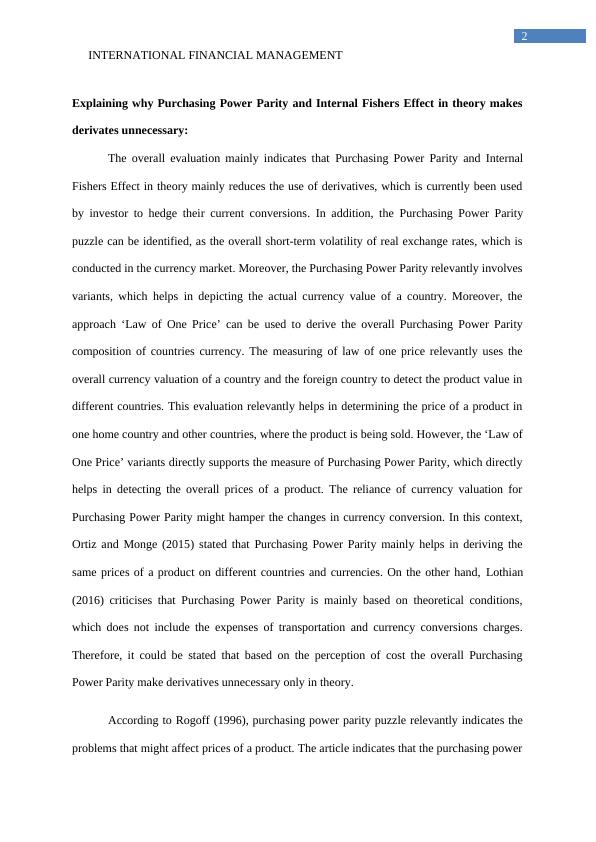Explaining why Purchasing Power Parity and Internal Fishers Effect in theory makes derivates unnecessary
Added on 2023-06-12
7 Pages1454 Words355 Views
End of preview
Want to access all the pages? Upload your documents or become a member.
International Financial Management: PPP, IFE and Derivatives
|8
|1761
|432
Theory of Purchasing Power Parity (PPPT)
|11
|2671
|235
Using Derivatives to Hedge Foreign Exchange Risk and Maintain Stable Purchasing Power Parity
|8
|1306
|242
International Financial Management: Purchasing Power Parity and Foreign Exchange Risk
|18
|3632
|118
International Business 303 - Doc
|6
|1141
|23
PPP and IFE in International Financial Management
|9
|2901
|202



